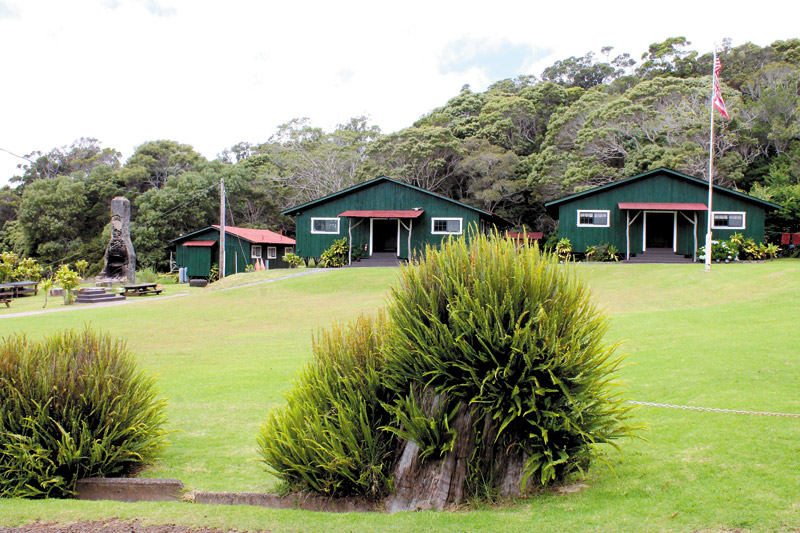Preserving KÅke’e
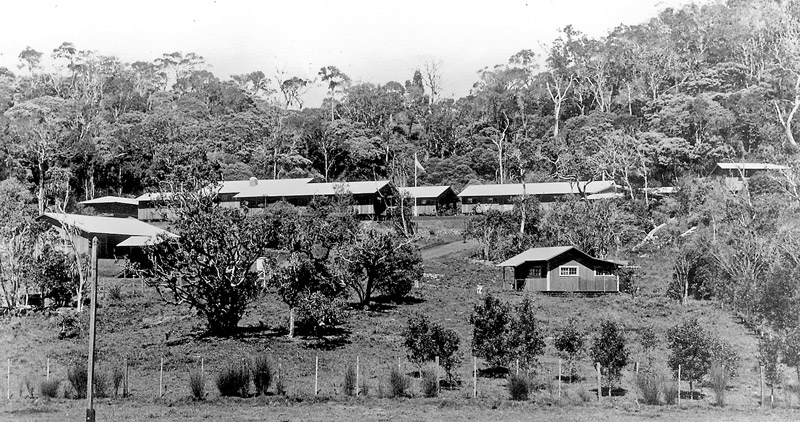
The Civilian Conservation Corps Camp in the early 1930s, soon after it was established as part of President Franklin D. Roosevelt’s New Deal. PHOTO COURTESY CIVILIAN CONSERVATION CORPS CAMP
When Chris Faye’s grandfather, Lindsay Sr., used to bring his family to Kōke‘e for vacation, he’d remind them about the fields that once dominated the mountainous region.
“He said it was grasslands,” says Faye, who would accompany her family on summer excursions to Kōke‘e when she was a child.
Rampant cattle, goats and the sandalwood trade were among the factors that left this once pristine forest nearly barren.
“Anything trying to grow was just eaten,” she says.
But due to the efforts of the Civilian Conservation Corps Camp, established in the early 1930s as part of President Franklin D. Roosevelt’s New Deal, millions of trees were planted. You can see the faces of the hardworking young men, who were part of Kaua‘i’s first enrollment camp, in a photo at Kōke‘e Natural History Museum. The repository is currently undergoing a revitalization effort.
But while Kōke‘e’s native forests struggle, Hui o Laka, the nonprofit that runs the Kōke‘e Natural History Museum and grounds of the historic CCC Camp, is doing what it can to encourage visitors and kama‘āina to appreciate and help preserve the state park. The revamped exhibit at the museum is part of that process.
Faye has been at the helm of the nonprofit’s mission since 2015, when she stepped in as director. She has taken extra measures to make several updates to the museum and the nonprofit’s programs. She’s proud to be part of the process, especially because her family has had ties to the museum since its establishment in 1952.
Considered the oldest repository on Kaua‘i, the museum was initiated with a handwritten note on the back of an envelope, as well as a handshake that sealed the deal between her great-aunt Isabel Faye, her cousin Ruth Knudsen Hanner and park ranger Joe Souza. The museum, which officially opened in 1953, was established to preserve the natural history of the island, as well as give people a chance to appreciate nature and groups like the CCC that made the area what it is today.
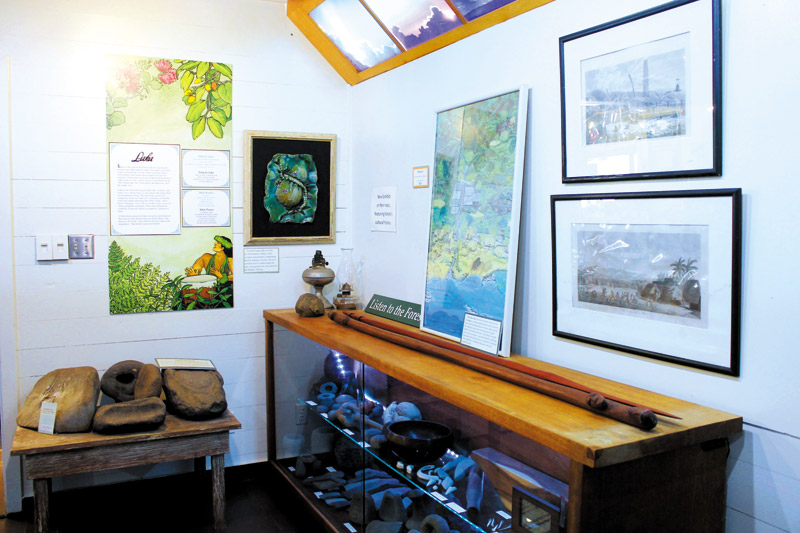
The Koke‘e Natural History Museum was established in the 1950s and serves as a repository for Kaua‘i history.
When you visit, you immediately step back in time. Not only are many of the specimens the same as they’ve been for decades, it’s one of the only places on Kaua‘i without internet access or cell phone service. But Faye likes it that way. She wants people to visit and absorb the culture and history of Kōke‘e without distractions. And since many visitors walk through the doors of the museum every day, it presents a unique opportunity to educate them about the island.
“Kōke‘e Museum is one of those gems that everyone should visit when you are in the park,” says Sue Kanoho, executive director of Kaua‘i Visitors Bureau. “Chris Faye and her team are very knowledgeable on the area and can give helpful hints for hiking, as well as education on the area.”
Faye is on a journey to continue upgrading the museum and she’s also been instrumental in refurbishing the short Nature Trail behind the building. She works with volunteers and groups like Junior ROTC from Waimea High School to clear invasive plants and maintain native species.
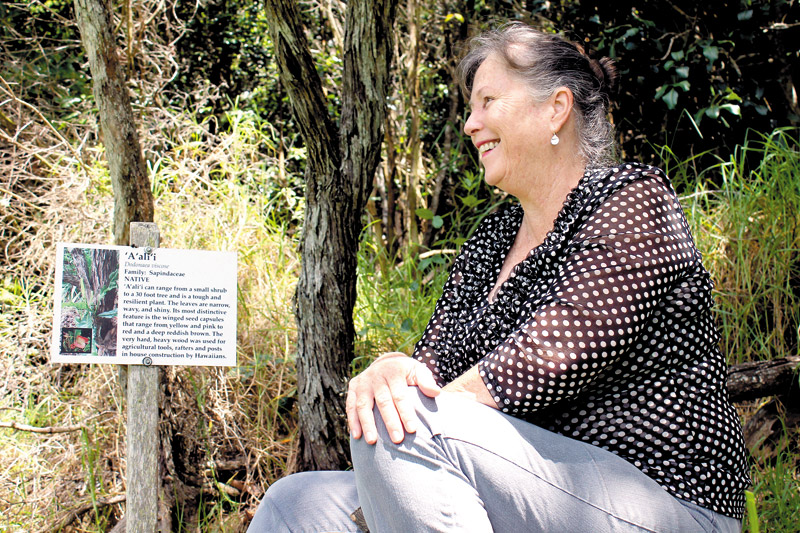
Chris Faye has served as the director for Hui o Laka, which runs the Koke‘e Natural History Museum, since 2015.
“What we’re trying to do is give people the experience of seeing what the native forest really looks like because a lot of the trails aren’t like that anymore,” she says. “We picked a place where we can keep the forest relatively free of weeds. All we can do is be an example and hopefully people will see the value of keeping our forests.”
She learned to be grateful for the native forests as a child. Her family was connected to the sugarcane industry and so she grew up on all four major Hawaiian Islands, but she always had an affinity for the time she spent in Kōke‘e. Faye loved hiking the forests with her father, Lindsay Jr., and learning about the native plants and animals. She also was fond of the times they stayed in their cabin longer than planned, and supplemented their meals by foraging for food like watercress at Waipo‘o Falls.
These days, she’s encouraging keiki and young adults to harbor that same enthusiasm for nature when they visit as part of Hui o Laka’s Kokua Kōke‘e program. Students from universities and other groups often stay at the CCC Camp, which is one of the few in the nation that remain largely intact, and have the option of volunteering for service projects like carefully clearing invasive weeds.
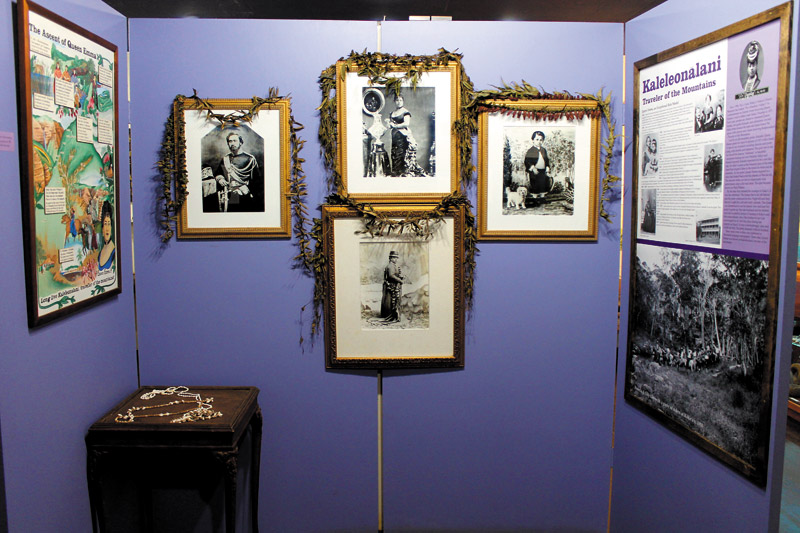
The restoration and revitalization of Koke‘e Natural History Museum includes an updated section about Hawaiian history.
Another way the nonprofit inspires respect for Kōke‘e is by hosting two events each year. The Banana Poka Roundup, which took place in May, is held at the CCC Camp and provides an opportunity for people to experience the grounds that are adjacent to the museum, as well as pay tribute to the forest through an environmental fair that includes music and activities.
The other annual festival is Eō e Emalani i Alaka‘i, which will take place Oct. 14 from 9 a.m. to 4 p.m. at Kanaloahuluhulu Meadow. The event celebrates Queen Emma and her journey to Kōke‘e and Kilohana in 1871 and includes a formal procession, hula hālau performances and other activities.
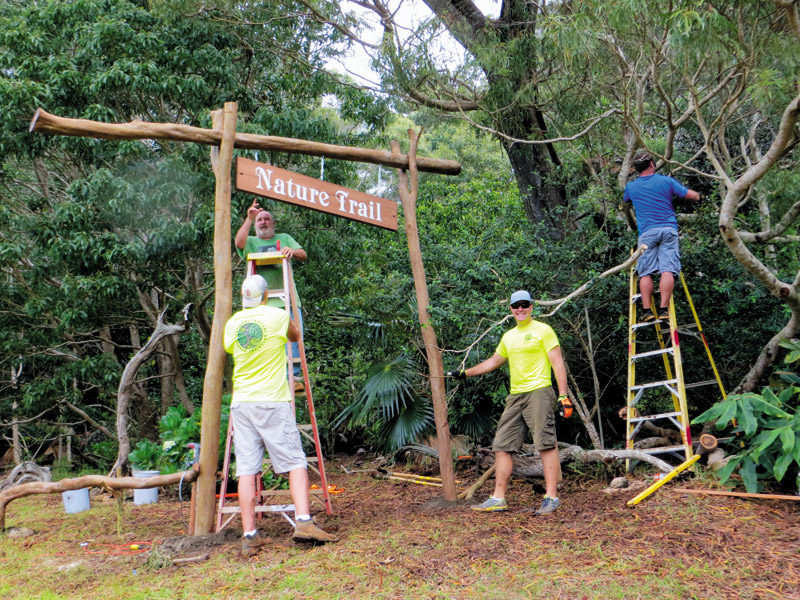
Hui o Laka staff member Albert Schraepfer and former board trustee Andy Jasper work with other volunteers to install the Nature Trail entrance sign behind Koke‘e Museum. PHOTO COURTESY CHRIS FAYE
Faye plans to continue restructuring Hui o Laka in a way that excites more visitors and kama‘āina, motivating them to help restore and replenish the Hawaiian forest. Because if things continue on their current track, she’s afraid there won’t be any native species left to appreciate.
“Chris Faye has a deep commitment to Kaua‘i, its heritage and the natural environment that surrounds Kōke‘e State Park,” says Kanoho.
Visit kokee.org for more information.


